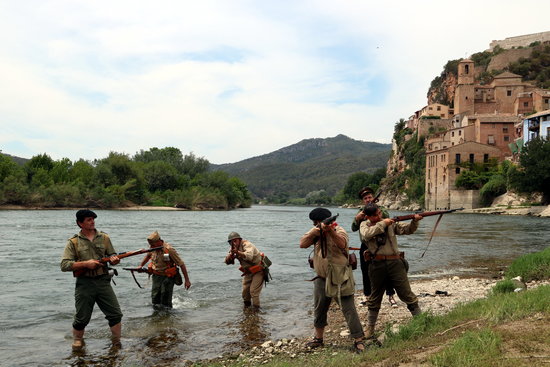Catalonia remembers bloodiest battle in Civil War 80 years on
Events and reenactments of Battle of the Ebre mark date as government calls local councils to promote vestiges of conflict

It was autumn 1938 and the water of the Ebre river was red due to the blood of the soldiers dead in battle there –soldiers who were are young as 17.
Very few people who witnessed the Battle of the Ebre, are still alive 80 years on, but their children and grandchildren remember, and are aware of the extent of the tragedy and what the battle meant for the fate of the country.
The Battle of the Ebre was the bloodiest in the Spanish Civil War, and it took place on both banks of the lower part of the Ebre river, between southern Catalonia and southeastern Aragon.
From 50,000 to 100,000 people lost their lives on both sides, including soldiers as young as 17 in the side defending the democratic government at that time –the so-called ‘baby bottle regiment’.
On November 16, 1938 the battle came to an end with the Francoist side being successful, what ultimately meant the final victory of his Fascist army and a military dictatorship in the country for almost 40 years.
Given the impact of the battle and coinciding with its 80th anniversary, the Catalan government called the local authorities to promote the preservation of vestiges of the conflict, as well as holding events to remember.
Some of them will take place this weekend in the Ebre region, including reenactments and conferences.
And some others are already ongoing, such as an exhibit in Amposta’s Museum of the Battle of the Ebre, to remember the role of the international brigades in that episode.
This, as an exhibit related to the Spanish Civil War opened this week in Granollers, central Catalonia. The show simulates the corpses of the 224 people who lost their lives in a Fascist Italy air force bombing on May 31, 1938 in this town.